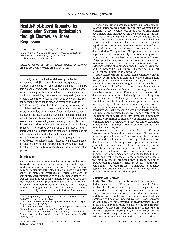摘要
This study develops a health-risk-based groundwater management (HRGM) model. The model incorporates the considerations of environmental quality and human health risks into a general framework. To solve the model, a proxy-based optimization approach is proposed, where a semiparametric statistical method (i.e., clusterwise linear regression) is used to create a set of rapid-response and easy-to-use proxy modules for capturing the relations between remediation policies and the resulting human health risks. Through replacing the simulation and health risk assessment modules with the proxy ones, many orders of magnitude of computational cost can be saved. The model solutions reveal that (i) a long remediation period corresponds to a low total pumping rate, (ii) a stringent risk standard implies a high total pumping rate, and (iii) the human health risk associated with benzene would be significantly reduced if it is regarded as constraints of the model. These implications would assist decision makers in understanding the effects of remediation duration and human-health risk level on optimal remediation policies and in designing a robust groundwater remediation system. Results from postoptimization simulation show that the carcinogenic risk would decrease to satisfy the regulated risk standard under the given remediation policies.
- 出版日期2008-12-15
